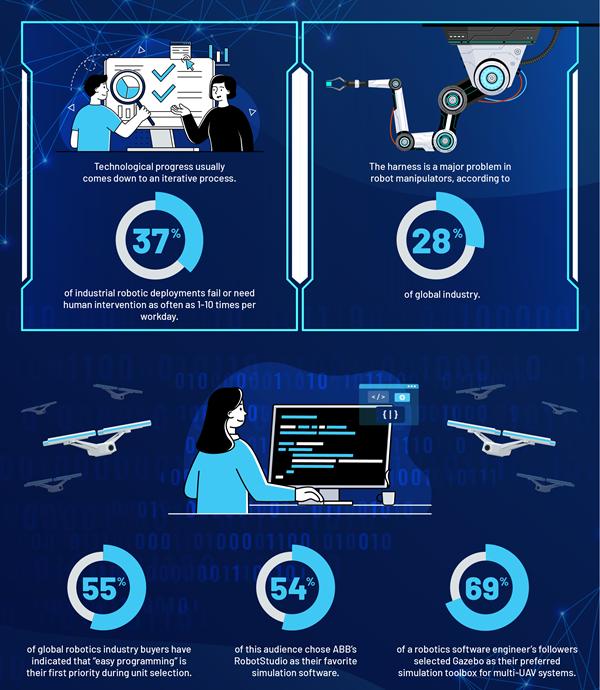The report “Robotics Enablement: Installing Robots in the Food Supply Chain” is approximately 5,000 words (30 pages). This report sheds light on robotics, primarily to inform policymakers of potential courses of action and to highlight opportunities for investors.
This analysis breaks down the food supply chain and calls attention to current or potential robotic deployments at each stage. Information has been curated and presented through the lens of public policy. Insights are carefully organized and creatively visualized.
This report functions as a stakeholder engagement tool, allowing the reader to zoom out and contemplate different forms of robotics enablement, from policies to platforms, as well as robotics use cases. Automation won’t happen automatically. By directing attention to corporate maneuvering and political considerations, including data and national security risks, this report ensures that those in public service can make well-informed decisions when helping to advance technological change.
A section on the global food supply chain underscores the relevance of robotics to public policy and government bodies or NGOs. Since food demand will never be satiated, this thematic analysis also hints at the growth potential for investors in AgTech.
This qualitative research provides a useful starting point for conversations and change-making, supported by reliable data and sociopolitical context.
The report also surfaces over 30 quantitative insights within its strategically-oriented, highly qualitative structure. This includes data visualizations that identify enabling factors, quantify opportunities, and benchmark technological progress.
Robotics Enablement: Installing Robots in the Food Supply Chain Report Highlights:
- Policymakers have a range of tools available to positively influence robotics developments, such as tax policies, public-private partnerships, research or innovation institutes, consortiums, intellectual property law, trade agreements, and, at the foundational level, STEM education programs.
- Technical platforms, including simulators, are also important. Building, testing, and refining robotic installations in virtual environments reduces risks and protects any ongoing production from unnecessary downtime.
- Governments or NGOs may choose to support robotics R&D in order to stimulate economic growth and transformation, getting ahead of inevitable disruption and creating new, higher-value jobs for citizens.
- The total food supply chain, which encompasses production, processing, distribution, consumption, and disposal, will eventually be transformed by robotics developments and is already affected.
This report will provide answers to the following key questions:
- What are different forms of robotics enablement?
- How are global industries and policymakers navigating robotics developments?
- What is the value of embedding robots throughout the food supply chain?
- How does robotics intersect with the concept of smart cities?
- How might robots impact society, both positively and negatively?
- What are relevant data points for robotics enablers and change-makers?
Table of Contents
1. An Introduction to Robotics Enablement
1.1 Key Benefits of This Report
1.2 Target Audience
1.3 Companies Mentioned in This Report
1.4 Methodology
1.5 Executive Summary
2. Four Forms of Robotics Enablement: M&A, Smart Cities, Policies, and Platforms
2.1 M&A
2.2 Smart Cities
2.3 Policies
2.4 Platforms
2.5 Conclusions
2.6 Infographics: Robotics Enablement
3. Robots in the Food Supply Chain
3.1 Robots in Farming
3.2 Robots in Food Processing
3.3 Robots in Food Service and Delivery
3.4 Robots in Waste Management
3.5 Conclusions
3.6 Infographics: Adopting Robots in the Food Supply Chain
3.7 Infographics: Food Supply Chain Robots and Sustainability
Companies Mentioned (Partial List)
A selection of companies mentioned in this report includes, but is not limited to:
- ABB Robotics
- Cleveron
- Harvest CROO Robotics
- Hitachi
- Waste Robotics









